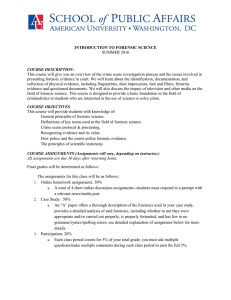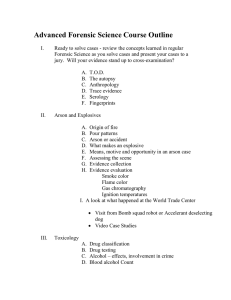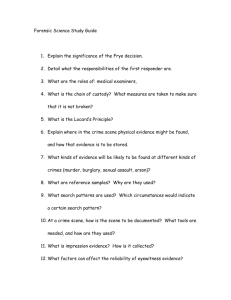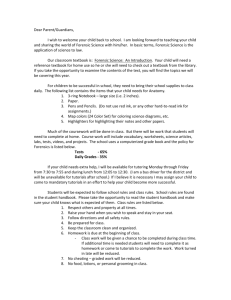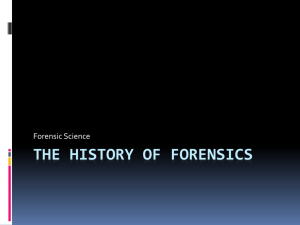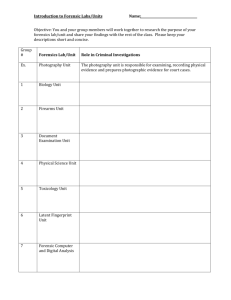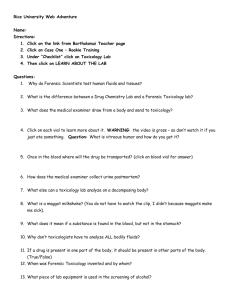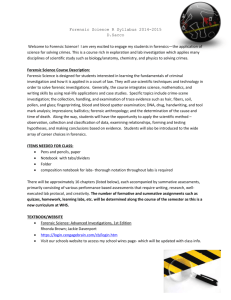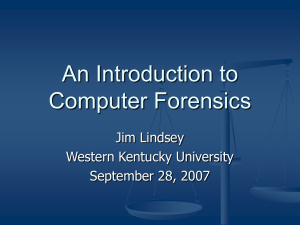Course Syllabus Forensics Mr. LaChausse Room 123 Office Hours
advertisement
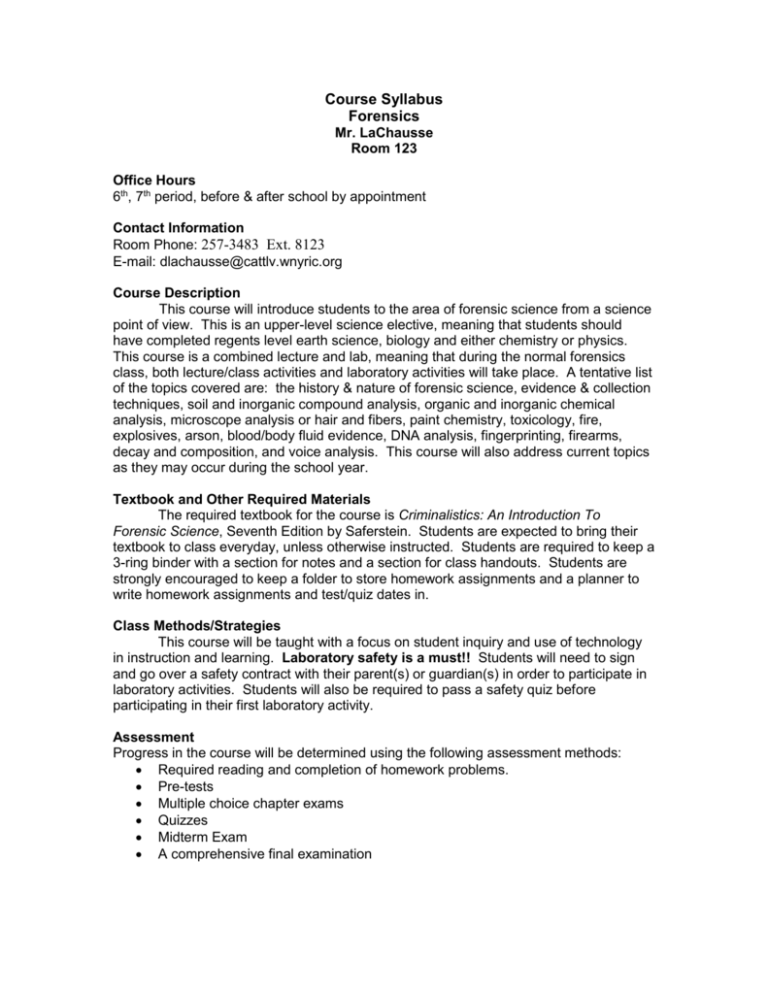
Course Syllabus Forensics Mr. LaChausse Room 123 Office Hours 6th, 7th period, before & after school by appointment Contact Information Room Phone: 257-3483 Ext. 8123 E-mail: dlachausse@cattlv.wnyric.org Course Description This course will introduce students to the area of forensic science from a science point of view. This is an upper-level science elective, meaning that students should have completed regents level earth science, biology and either chemistry or physics. This course is a combined lecture and lab, meaning that during the normal forensics class, both lecture/class activities and laboratory activities will take place. A tentative list of the topics covered are: the history & nature of forensic science, evidence & collection techniques, soil and inorganic compound analysis, organic and inorganic chemical analysis, microscope analysis or hair and fibers, paint chemistry, toxicology, fire, explosives, arson, blood/body fluid evidence, DNA analysis, fingerprinting, firearms, decay and composition, and voice analysis. This course will also address current topics as they may occur during the school year. Textbook and Other Required Materials The required textbook for the course is Criminalistics: An Introduction To Forensic Science, Seventh Edition by Saferstein. Students are expected to bring their textbook to class everyday, unless otherwise instructed. Students are required to keep a 3-ring binder with a section for notes and a section for class handouts. Students are strongly encouraged to keep a folder to store homework assignments and a planner to write homework assignments and test/quiz dates in. Class Methods/Strategies This course will be taught with a focus on student inquiry and use of technology in instruction and learning. Laboratory safety is a must!! Students will need to sign and go over a safety contract with their parent(s) or guardian(s) in order to participate in laboratory activities. Students will also be required to pass a safety quiz before participating in their first laboratory activity. Assessment Progress in the course will be determined using the following assessment methods: Required reading and completion of homework problems. Pre-tests Multiple choice chapter exams Quizzes Midterm Exam A comprehensive final examination Grading 10% Homework 5% Class Participation 20% Labs/Lab Write-ups 20% Quizzes 45% Tests/Long term projects Academic Integrity Any cheating or other act of academic dishonesty will be punished by an automatic “F” on that academic work. Other sanctions may be applied as well. See the student handbook for more information. Student Expectations Students are expected to come to class on time and be in their seats and ready to work when the bell rings. Students are required to complete bellringer activities at the beginning of class and turn in homework assignments if applicable. Students are expected to be respectful to the teacher and other students. Misconduct and horseplay will not be tolerated. It is my goal as a teacher to give every student a safe and positive learning environment. Changes in Syllabus This syllabus and class schedule is tentative. Any changes that should arise will be announced in class. Tentative Class Calendar . Unit 1: History & overview of forensics Unit 2: Crime scene Unit 3: Physical evidence Unit 4: Glass and soil Unit 5: Organic analysis Unit 6: Inorganic analysis Unit 7: The microscope Unit 8: Hairs, fibers and paint Unit 9: Drugs Unit 10: Forensic toxicology Unit 11: Arson and explosion investigations Unit 12: Serology Unit 13: DNA Unit 14: Fingerprints Unit 15: Firearms & tool marks Unit 16: Document & voice examination Unit 17: Forensic science & the internet Review for Final/Wrapup September September October October November November December December January January February March March April April May May/June June

